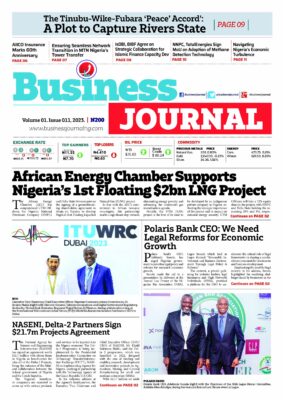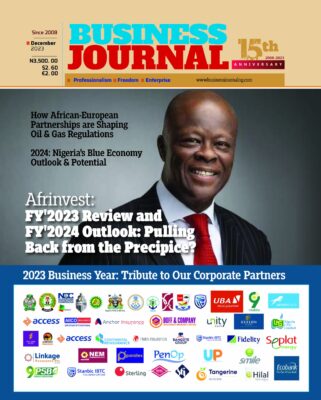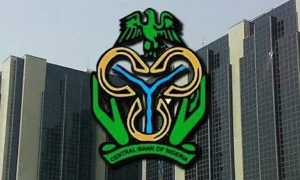How quick narratives change in frontier markets investing. Just three months back, as the Naira weakened below N500.00/US$1.00 in the parallel market and business confidence waned due to foreign currency shortages, macroeconomic risk became the most fundamental short term basis for forecasting Nigerian equities despite cheap valuation of assets.
Fast forward to June, all that seem to be in the very distant past with reinvigorated investment confidence, popularly termed “animal spirit” by JM Keynes, driving asset prices and valuation multiples to their 1-year highs in what we have termed “Great Macro Trade of 2017”.
Whilst we had called positive market sentiment post-FX liberalisation in our 2017 Economic and Financial Market Outlook, the bounce is also not so surprising for investors accustomed to the boom-bust cycle of frontier markets.
Predominantly, equities have essentially been a macro play in Nigeria over the past two years due to elevated macroeconomic risks which overshadowed resilient earnings fundamentals of companies in sectors ranging from banking to non-cyclical manufacturing.
Since the turn of the second Quarter however, macroeconomic fundamentals have shown remarkable improvements due to:
Rebound in oil production volumes and stable oil prices – which have stabilized fiscal balance and buoyed FX earnings;
Recent policy moves by the central bank to converge FX rates at all segments of the market. The latest of these moves is the opening of the Investors’ and Exporters’ Window (I&E window) in April which allowed market determined pricing of FX on a “willing buyer willing seller” basis for trades related to invisibles. Transactions have topped US$1.7bn in the I&E window since turnover data became available three weeks ago.
The I&E window has opened up the equities market once again to foreign investments with average value of daily trades on the NSE more than doubling to N4.5bn since 24th April from N1.6bn in the prior month while the benchmark All Share Index has gained 26.4% in five weeks.
MSCI last week also increased Nigeria’s weighting in its Frontier markets index from 6.5% to 7.9% while the CBN added to the flurry of good news with a circular released on 5th April 2017 to improve efficiency of the I&E window and aid faster convergence of all rates. Hence, as the stars continue to align for Nigeria from different directions, the narratives have conveniently changed from an underperforming economy in crisis to a growth economy leaving behind her cyclical and structural economic problems. These changing narratives have so far justified the recent bullish run on equities.
Yet, current trailing market P/E multiple of 14.2x may also appear fair, if not lofty, compared to 12.7x the market was trading three months back, bringing to fore the question on whether to pull the brakes on overweighting equities or doubling down on the accelerator. We answer this question and more in subsequent sections of this note, giving our perspectives on the fundamental and technical factors to consider as well as the risks to price into valuation.
Foreign Portfolio Investments: A Change in Tide?
Since the crash in global oil prices which began in H2:2014, there have been an exodus of foreign investors from the equity market and reduction in foreign investments inflows partly due to mispricing of the domestic currency and weak liquidity in the FX market.
Historically, foreign players have accounted for a larger proportion of trades in the domestic equities market, hence the investment decision of these players has been a factor driving market performance.
As depicted in chart 1, 2012- 2013 was a golden age for investors in the Nigerian Bourse, essentially due to influx of foreign funds benefiting from access to easy money in advanced economies and seeking high returns in growth markets with cheap valuations.
Consequently, foreign investment in equities peaked at US$4.9bn in 2013 but the trend reversed in the last three years following the decline in commodity prices. Average FPI into equities crashed 59.1% from US$3.8bn in Q3:2014 to US$1.5bn in Q4:2014 and has remained on a steady decline, settling at US$102.0mn in Q1:2017. The slowdown in FPIs is reflected in the performance of the equities market which has declined for three consecutive years.
Interestingly, the introduction of somewhat flexibility in the I&E FX window in April has attracted frontier fund managers into Nigerian equities with noticeable impact on market performance. We believe there is still room for more participation, especially from emerging market funds, as liquidity within the FX market continues to improve.
The MSCI Story…Golden Sectors and Stocks to Watch
The Morgan Stanley Capital International (MSCI) Frontier market index was rebalanced in May 2017 with Nigerian stocks weighting increased to 7.9% from 6.5% following the upgrade of Pakistan from the Frontier Market Index to the Emerging Markets Index.
The increase of Nigeria’s weighting further supported the 4-week old rally in the Nigerian Bourse as the benchmark index gained 3.9% on resumption of trading this week. Before the announcement of the Index rebalancing, MSCI had put Nigeria’s status in the Frontier Markets Index under consideration for a “Standalone” re-classification as a result of the liquidity constraints and fragmentation of the foreign exchange market.
Nonetheless, we think the odds of Nigeria being reclassified are slimmer now on the back of the recent development in the FX market, particularly the introduction of the I&E window and improvement in FX interventions by the apex bank, which has buoyed liquidity and narrowed the parallel market premium. We perceive that MSCI will most likely adjust the currency it uses for the computation from Interbank pegged rate to the I&E fixing (NAFEX).
Regardless, we believe the increase in Nigeria’s weighting bodes well for the equity market, particularly the 16 stocks included in the index, as it exposes the market to global tracking funds seeking exposures to frontier markets. Whilst the market prices of these stocks may appear overvalued based on absolute valuation, their relative valuation multiples (as shown in chart 3) indicate that they are still attractive when compared to other Sub-Saharan African and frontier markets.
Our analysis reveals that the Banking, Industrial and Oil & Gas sectors are under-priced when compared to the other Sub-Saharan African Frontier Markets which avail investors the opportunity to take position in the sectors.
However, the Consumer Goods sector is relatively expensive owing to the historical premium investors value Nigerian consumer goods companies as well as the recent pressure on earnings of most of the blue-chip stocks in the sector.
What About Fundamentals…Are Nigerian Equities Still Undervalued?
Prior to recent rally on the Bourse, most stocks quoted on the Nigerian stock exchange were trading at deep discount to analysts’ valuation as the major players (PFAs, Mutual Funds, and Insurance Firms etc.) held short-term views.
The re-entry of foreign players coupled with the ongoing positive sentiment in the economy presents a possibility for a year-long bull market. The NSE All Share Index price-to-earnings ratio stands at 14.2x, which is relatively cheaper compared to frontier and emerging markets peers – South Africa FTSE/JSE (18.9x), MSCI FM index (15.0x) and BRICS (16.5x).
Moreover, company scorecards have remained resilient in recent times as companies exposed to the downside risk of macro headwinds were able to navigate the choppy terrain by leveraging on scale, non-core earnings growth strategy, operating cost optimisation, local input sourcing, usage of deferred tax assets as well as individual proficiencies to stay profitable.
We remain optimistic on corporate earnings for 2017, forecasting EPS to grow 18.5% for companies within our coverage as we expect the recent improvement in FX liquidity – which has resulted in the appreciation of parallel market FX rate – to positively impact cost of sales for manufacturers, while improvement in fiscal revenue for the Sovereign and Sub-nationals is also positive for consumer spending and earnings growth.
Nonetheless our general bullish view of the market, our assessment of different sectors differs as we highlight below:
Banking Sector: The Banking sector has benefitted the most from the bullish run, with the NSE Banking index YTD return (at +42.4%) outperforming the benchmark. Valuation multiples have also improved – sector P/E and P/BV ratio have risen to 6.3x and 0.8x from 4.3x and 0.6x in January respectively. However, investors’ interest has largely been centered on Tier-1 lenders with P/E and P/BV for these banks at 7.1x and 0.8x respectively compared to average P/E and P/BV for Tier-2 lenders (ex-STANBIC) of 5.7x and 0.2x respectively.
Nonetheless, we note that most of the Tier-2 banks (DIAMOND, SKYE, FCMB, UBN and UNITY) are still recording below-trend level of fundamental returns (measured by ROE) whilst facing capital adequacy challenges. Hence, it will take more time for value to be unlocked in the stocks.
This informs our preference for Tier-1 banks still trading below pre-crisis valuation multiples and recommend Tier-2 banks for investors with longer holding period.
Industrial Goods Sector: The Industrial Goods sector has returned +25.1% YTD with sector P/E now at 12.9x. Cement companies – which dominate the sector index weighting – have largely driven the rally as challenges which had weighed on their earnings in FY:2016 (gas pipeline vandalism, aggressive price competition and high external leverage) have been largely surmounted with earnings now set to improve remarkably in FY:2017.
The improvement in industry fundamental was reflected in Q1:2017 results of CCNN, WAPCO and DANGCEM but the short-term upsides to these stocks are limited following the recent rally.
Insurance Sector: Despite weaknesses in Nigeria’s macroeconomic fundamentals in 2016, performance of the insurance sector was largely positive, albeit modest. The Insurance index has however underperformed the benchmark with current Year to Date return of 14.0% largely driven by gains in MANSARD.
One of the factors dragging sentiment towards the sector is the renewed drive towards risk based supervision and capitalisation rules via the shift to Solvency II and ORSA (Own Risk and Solvency Assessment) guidelines. Solvency II is a Risk Based Supervision (RBS) – similar to the BASEL II guidelines for Banks – which is expected to increase pressure on capital as it specifies how the capital requirement and resources are set, assessed and determined. Consequently, many insurers are in the process of raising additional capital with potential dilution of shareholders’ equity. Hence, we are neutral on the sector.
Consumer Goods Sector: Activities in the Consumer goods sector have been majorly hampered by the economic downturn which dragged revenue while lingering FX liquidity challenges pressured profitability. These factors weighed on sentiment towards stocks in this sector.
However, the recent improvements in the general economic condition as well as increased FX supply is expected to boost performance of companies in the sector this year with market prices already reflecting this expectation. NESTLE and NIGERIAN BREWERIES have advanced 19.1% and 7.5% YTD.
Likewise trading multiples – NESTLE (P/E: 79.9x) and NIGERIAN BREWRIES (P/E: 41.7x) – indicate that investors continue to place premiums on pricing of these stocks. Our top picks in the sector are NESTLE and NIGERIAN BREWERIES, based on the fact that foreign players have started to return to the market and “pre-FX crisis trading trend” suggests that these counters are investors’ choice picks in the sector.
Oil & Gas Sector: The sector has come under a lot of pressure having been hit hard by militancy and liquidity challenges in the power sector which has constrained the performance of sector large-caps such as OANDO, SEPLAT and FORTE.
Downstream companies which outperformed in 2016 have not enjoyed similar sentiment save for MOBIL which is a subject of an M&A transaction. Consequently, the sector is the weakest performer of all sector indices we track with a YTD return of 1.8%.
However, we believe the sector should record improvements in subsequent quarters in terms of earnings and valuation, due to restoration of peace in the Niger Delta, reopening of the Forcados terminal which is the major export routes for upstream indigenous companies and efforts being channeled into solving the liquidity crisis in the power sector.
Greatest Risk to Current Optimism – FX Liquidity and Market Structure
The CBN’s approach towards the management of FX remains a downside risk to equity market performance as past and current developments indicate that sentiment towards equities have been anchored by FX liquidity.
This is not surprising as investors are typically wary of participating in the equities market when the economy faces FX liquidity challenges or inconsistent management policies that do not provide an assurance for convenient repatriation of funds.
The recent rally in domestic asset prices since the launch of the I&E FX window attests to the importance of a market determined FX rate and exchange regime. Thus, the CBN’s ability to maintain its stance of non-interference in the I&E window regardless of the direction in which the naira trends, is highly essential, as a breach on the CBN’s part will almost certainly retard participation by investors in the equities market.
However, the ability of the CBN to sustain its timely interventions which have significantly boosted FX liquidity in the economy remains susceptible to shocks in the global Oil market.
The possibility of lower global oil prices and reduced production levels – that could come about through an OPEC quota limit extension to Nigeria or acts of sabotage – remain key points of concern as they could stymie oil export earnings which account for a major share of total foreign exchange earnings and consequently pressure the external reserves.
Oil prices seem to have stabilized around the US$50.0/b mark post-extension of oil production cuts whilst production level is set to go back to peak level following lifting of Force Majeure on the Forcados Terminal. Going forward, we expect factor drivers of FX liquidity – domestic crude oil production, oil prices and CBN policies on FX – to affect sentiment in the equity market.
“Random Walk on Customs Street” …Will Technical Analysis Work?
Although the Nigerian equities market has been largely shaped by macroeconomic and company fundamentals post-2009 financial market crisis, technical study of trends, momentum, volume and volatility have also dictated the direction of stocks especially when market is considered overbought or oversold.
Whilst technical analysis suggests that investors begin to book profit as the Relative Strength Index (14D-RSI) hits the overbought threshold (70 points) and rebounds as RSI hits the oversold region (30 points), our study of trend shows that technical analysis between 2014 and 2016 – period of capital control and FX management inflexibility – has lagged the performance of NSE ASI given the more fundamental leading indicators that drove equities.
We hold a strong view that technical indicators are beginning to lead the direction of the index since the launch of I&E FX window but trend is not evocative of support and resistant levels for the RSI yet as we have seen the market sustain a bullish run for days within the overbought territory.
We believe that the Nigerian Bourse is currently being driven by Fundamentals (improving macroeconomic condition, particularly regarding FX) and technical analysis may not be the best methodology in calling the future performance of the Nigerian Bourse in the near term, largely because the market is in transition as stocks begin to break previous resistance levels and try to attain new support and resistance levels.
Conclusion
Nigerian equities as a basket are currently the 2017 goldmine of the emerging and frontier markets following the improved flexibility in the administration of FX.
The on-going repricing of the market suggests investors are playing “catch-up” with resilient company fundamentals, which market has lagged, having reduced the premium on macro risk.
Whilst we noted in our 2017 Outlook that the equities market will rebound northward of 15.6% if the FX challenges are addressed, the current structure of FX administration and the response rate of the equities market reinforces our conviction that the market is set for a “year round bull run.”















